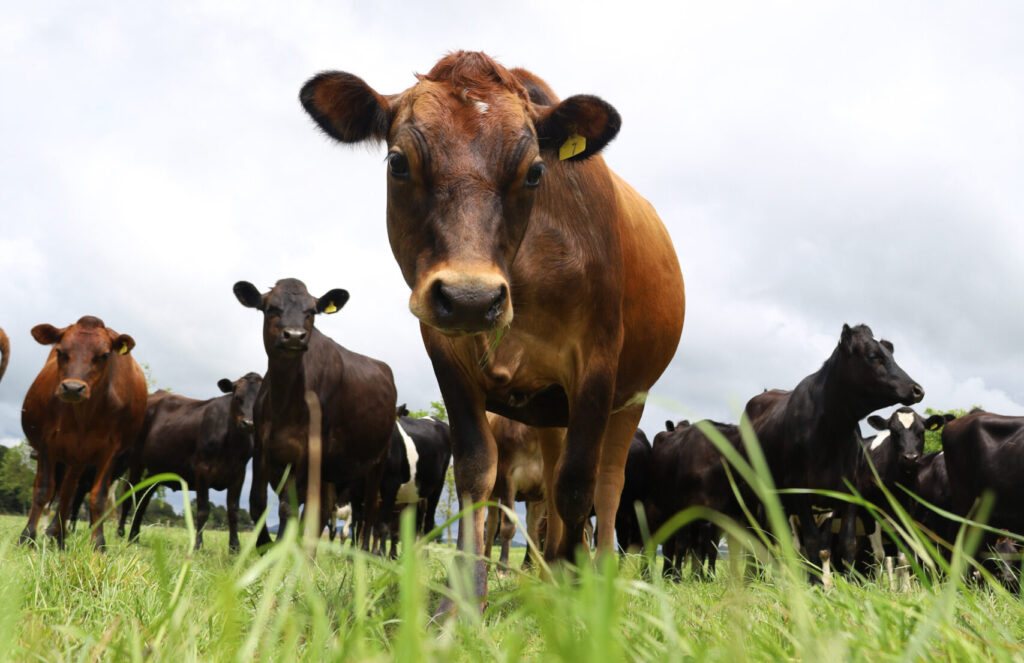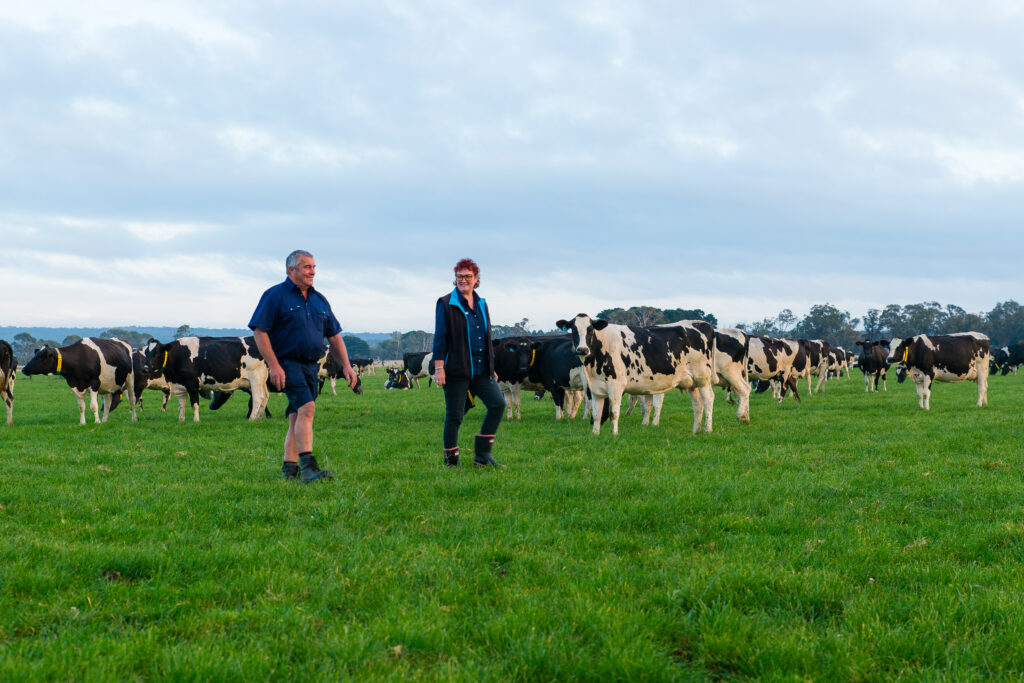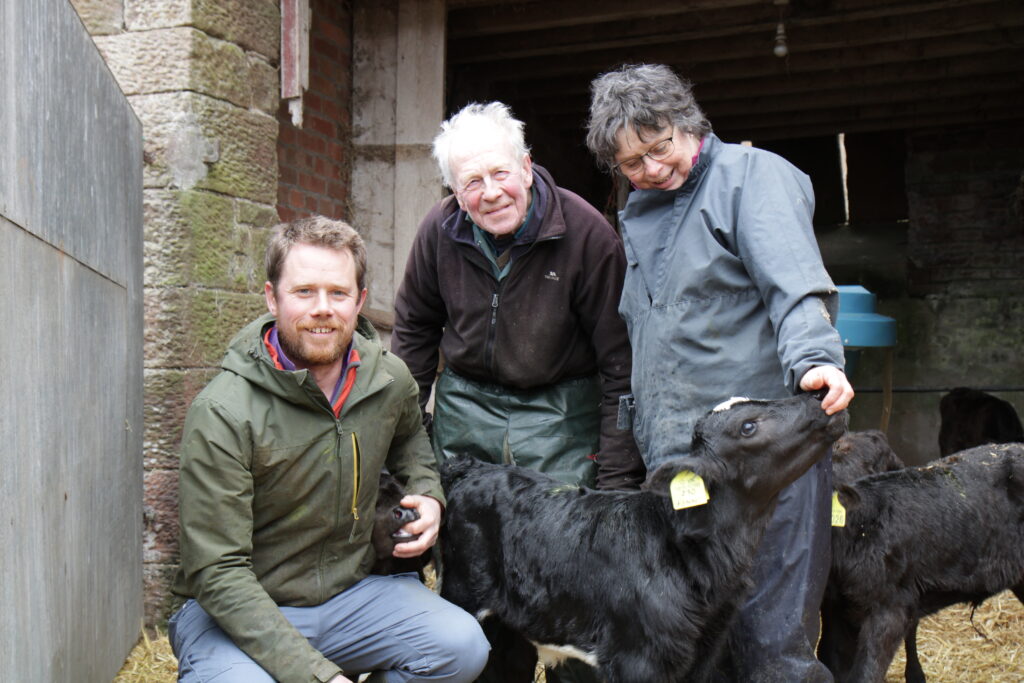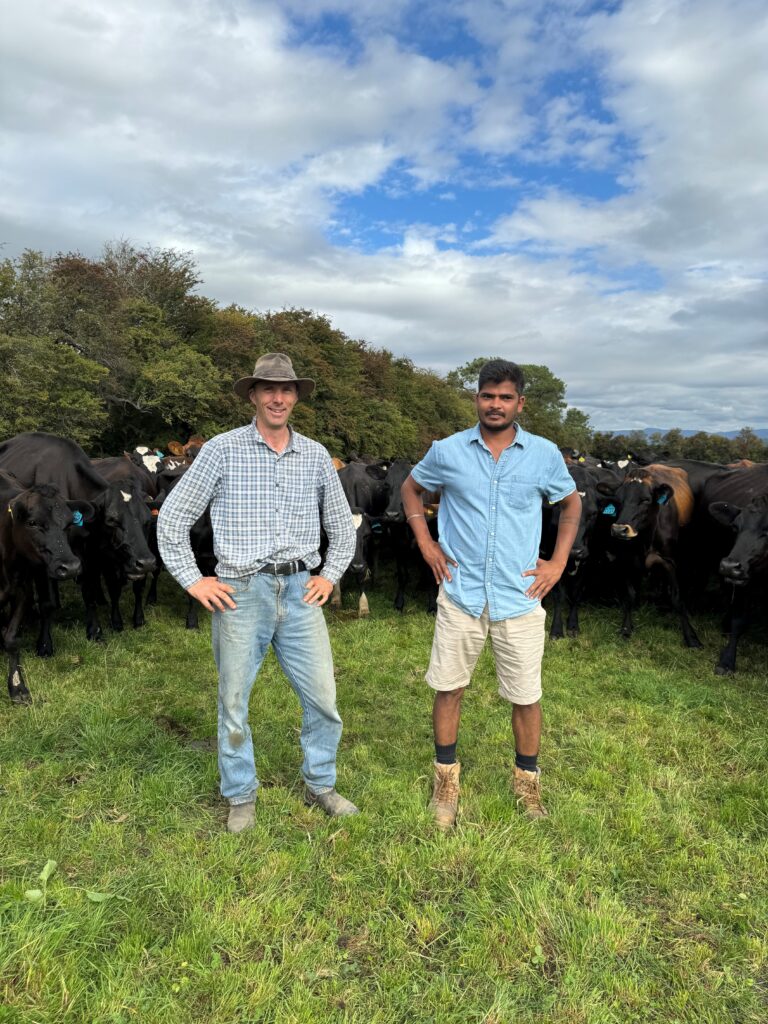In June 2023, seven Chilean dairy farmers travelled to New Zealand for a bespoke farm tour. The objective? To discover what makes New Zealand dairy farmers some of the most productive, profitable and resilient dairy farmers in the world.
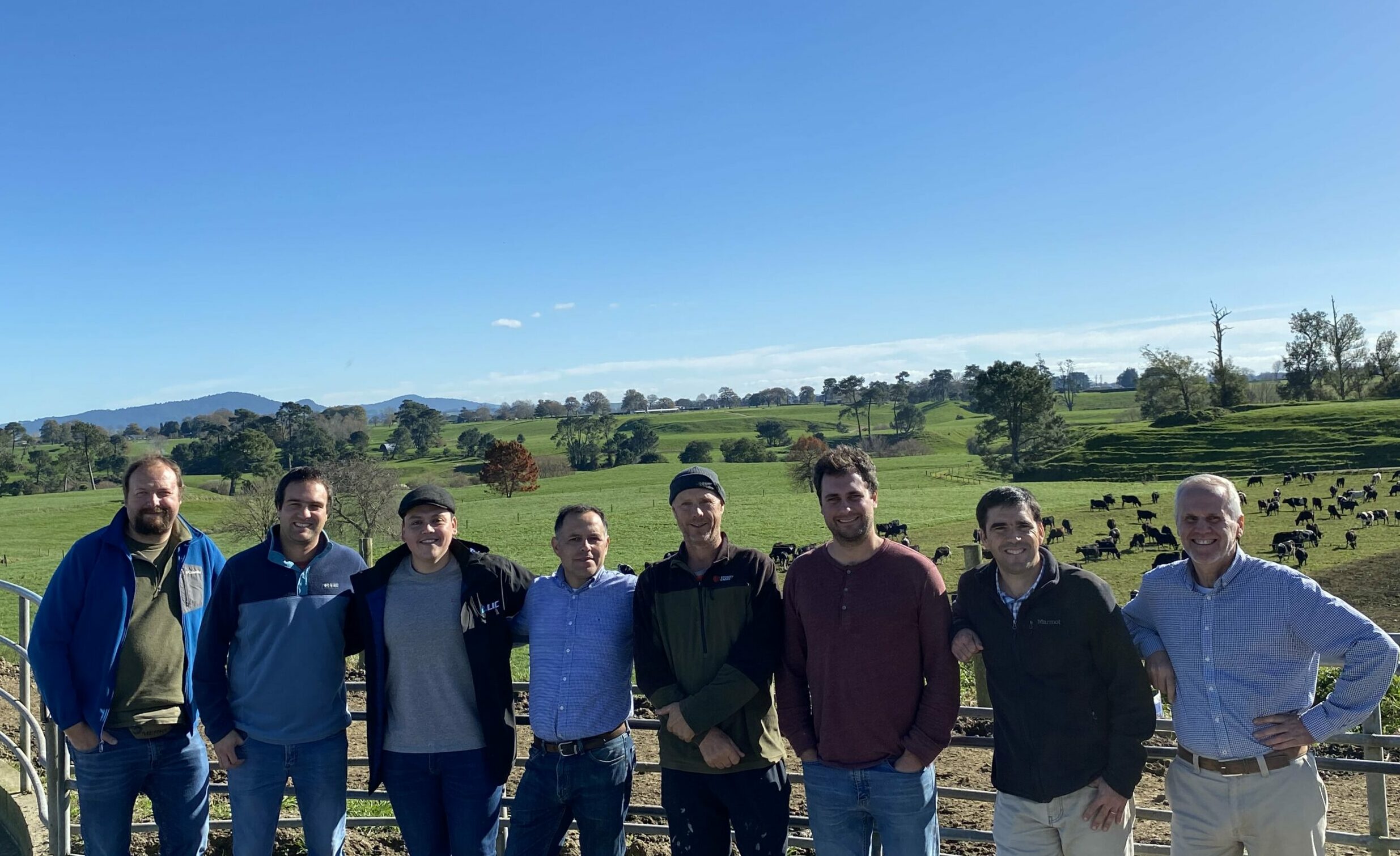
LIC organise these inbound group tours to provide a first-hand experience of how the NZ dairy industry works and showcase the important role of LIC within the industry. Barry Allison, manager of developing markets at LIC, says that many of the advocates for pasture-based dairy farming off-shore are LIC customers. “More often than not, they are farmers that have visited Kiwi farms and spoken to Kiwi farmers in the past.”
Claudio Díaz of ABS, LIC’s distributor in Chile, joined Barry and the farmers on the 11-day tour. ‘’Being able to travel to New Zealand to experience first-hand the local dairy industry allows us, as ABS Chile, to keep abreast of what is currently happening in this part of the world,” he said.
“Every day of the tour was full of constant learning, both from what we observed with our clients on the different dairy farms in the North and South Island, as well as from the conversations that resulted at the end of each visit.”
This was the first Chilean tour post-covid lockdown. Despite being in June, when most seasonal farmers have dried off and winter management is in full swing, it was a great opportunity to understand farm management at this critical time of the year. The group also visited some autumn calving operations that were in full production, and covered other topics such as calf rearing, variable milking intervals and succession planning, to name a few.
The tour included LIC’s head office, 13 different dairy farms, a visit to the national Mystery Creek Fieldays, Lincoln University Dairy Farms and some of NZ’s iconic farming retail stores.
North Island
At the beginning of the tour, the group visited LIC’s head office in Hamilton, New Zealand. This is where the magic happens. The campus is not only the corporate office, but it also hosts the main bull farm, semen collection barn, processing laboratory and semen distribution centre.
Here the Chilean farmers heard presentations from LIC experts on herd improvement, reproduction and the future cow. During the presentations, there were always a good number of questions and answers.
Throughout the tour, LIC used its thorough network around NZ to organise farm visits that met the needs and interests of the group. Although the conditions on-farm weren’t ideal, the wet and challenging environments created engaging conversations on farm and pasture management, including setting the farm up for spring. This was especially relevant to the Chilean group, as Chile’s seasons and climate are similar to New Zealand’s.
Reece Darby’s farm in Huntly, Waikato, is a high input, autumn calving operation. Attention to detail is critical for success and this is where Darby excels. The group was also fortunate to witness the skill and professionalism of the New Zealand artificial insemination (AI) service in action. An AI tech just happened to be there inseminating the autumn-calving cows. There was even time to speak with them to learn some tips and tricks of the trade.
On another Waikato farm, the Chilean farmers saw the power of combining the learnings from farming in different countries. On his grass-based high input dairy farm here, Kevin Van der Poel applies methods he learned while running a large dairy farm in the USA. He considers his sharp focus on cost as one of the keys to success. Van der Poel also had a clear succession plan for his dairy farm, with his son now taking an equity position and a management role on the farm. This got the group thinking about future-proofing their own businesses in Chile, and what succession planning might look like for them.
Career progression was talked about again at Player Farms. Dairy farmer Simon Player was big on helping young people new to farming into the industry and move up the career ladder, just as he had done. The group called Player, the ‘Messi’ of dairy farming in NZ. His herd is producing an outstanding 660kg/MS per cow from a system 3-4 type dairy farm. This comes from an eye for quality animals and efficient feed utilisation.
On the other end of the scale, low input farmer Bryce Anderton milks 600 cows in a split-calving system. The family farm was initially a high input system with a focus on show cows. Around 20 years ago, Anderton converted the family farm to a lower input pasture-based system, using LIC genetics to produce a more efficient herd. It worked out well for him, as his cows now produce well over 450kg milksolids per cow, from a mostly grass diet. He even has 9- and 10-year-old cows still producing amazing milk volumes.
For a group of farmers travelling to NZ in June, the national Fieldays is a must. Fieldays is the biggest agricultural event in the southern hemisphere and a hub for the latest in agri-tech and innovation. The Chilean farmers even made it onto national television when they met National political party leader, Christopher Luxon.
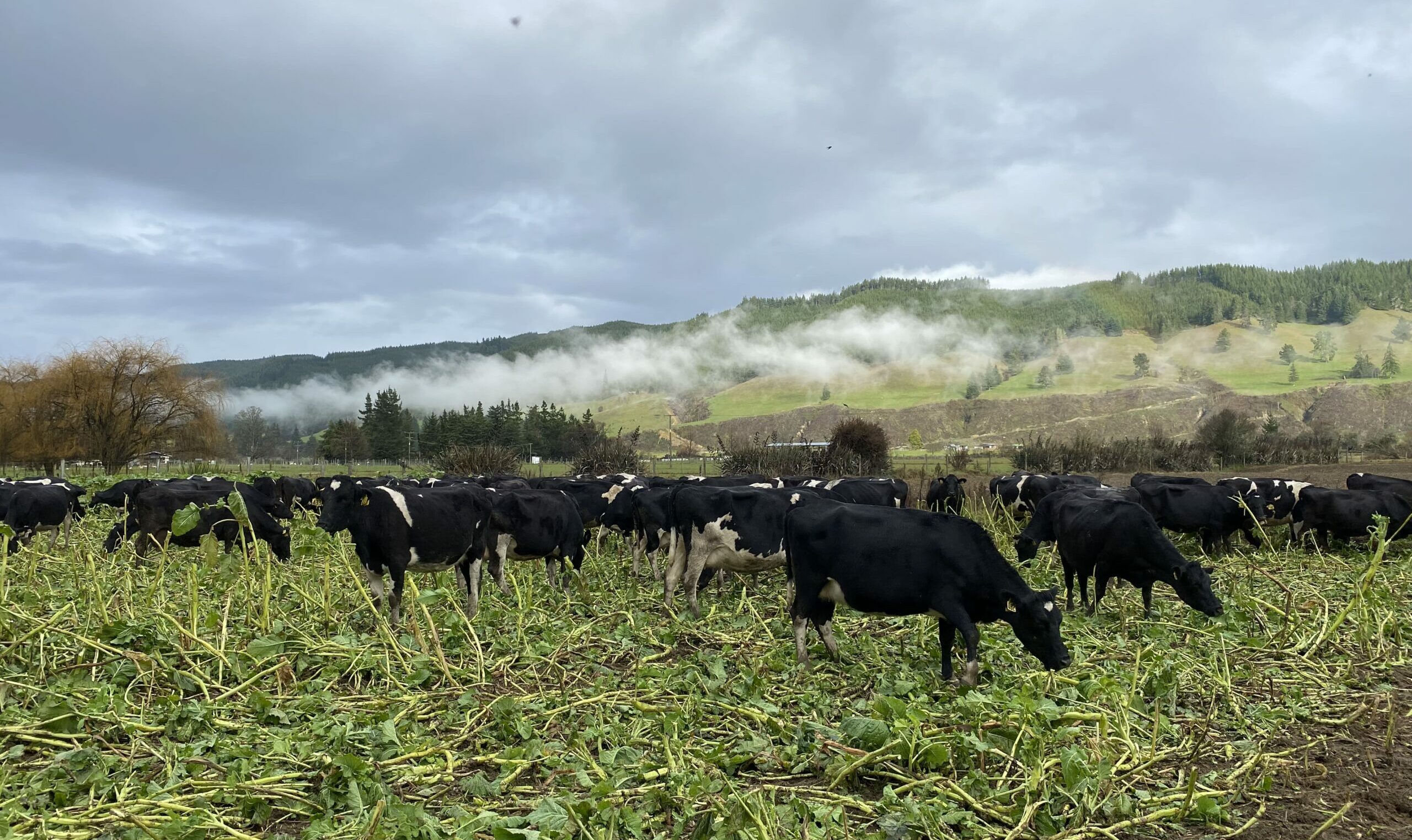
South Island
Across the Cook Straight and over to Nelson in the South Island, the sun was shining, and the group had an engaging morning with LIC FarmWise consultant and variable milking interval expert, Brent Boyce. This was a specific request from the Chilean farmers, as they are facing similar labour issues to NZ farmers. Once-a-day milking or variable milking may be a solution for them.
The group then headed out on farms near Murchison. The first stop was at the farm of Stuart & Paula Davis, with new sharemilkers Jamie and Fliss Thomas. This was the first season that the farm owners had a sharemilker onboard, so it was a major change for them. There was an interesting discussion about what this involves, in terms of contractual arrangements and transitioning from being totally involved in the day-to-day operations to that of a farm owner only. Equally interesting was understanding this transition from the point-of-view of the new sharemilkers.
Next up was John and Vicki Nicholls’ farm. John used to be the FarmWise manager at LIC. On show at the Nicholls farm was the outstanding condition of the heifers and wintered cows. They are all maintained on the farm over winter, grazing on crops such as kale and fodder beet.
On the Auchenbrae farm in Culverden, sharemilker Paco Mones produces 500 kgMS per cow. He milks 1750 cows with the assistance of five farm employees from Latin America. Here, the group’s focus was on calf rearing. This is an area that interests many visiting farmers from Latin America. The group was blown away not only by the high quality of care and the resulting low death rate of calves in NZ but also by the efficiency required to rear large numbers of calves.
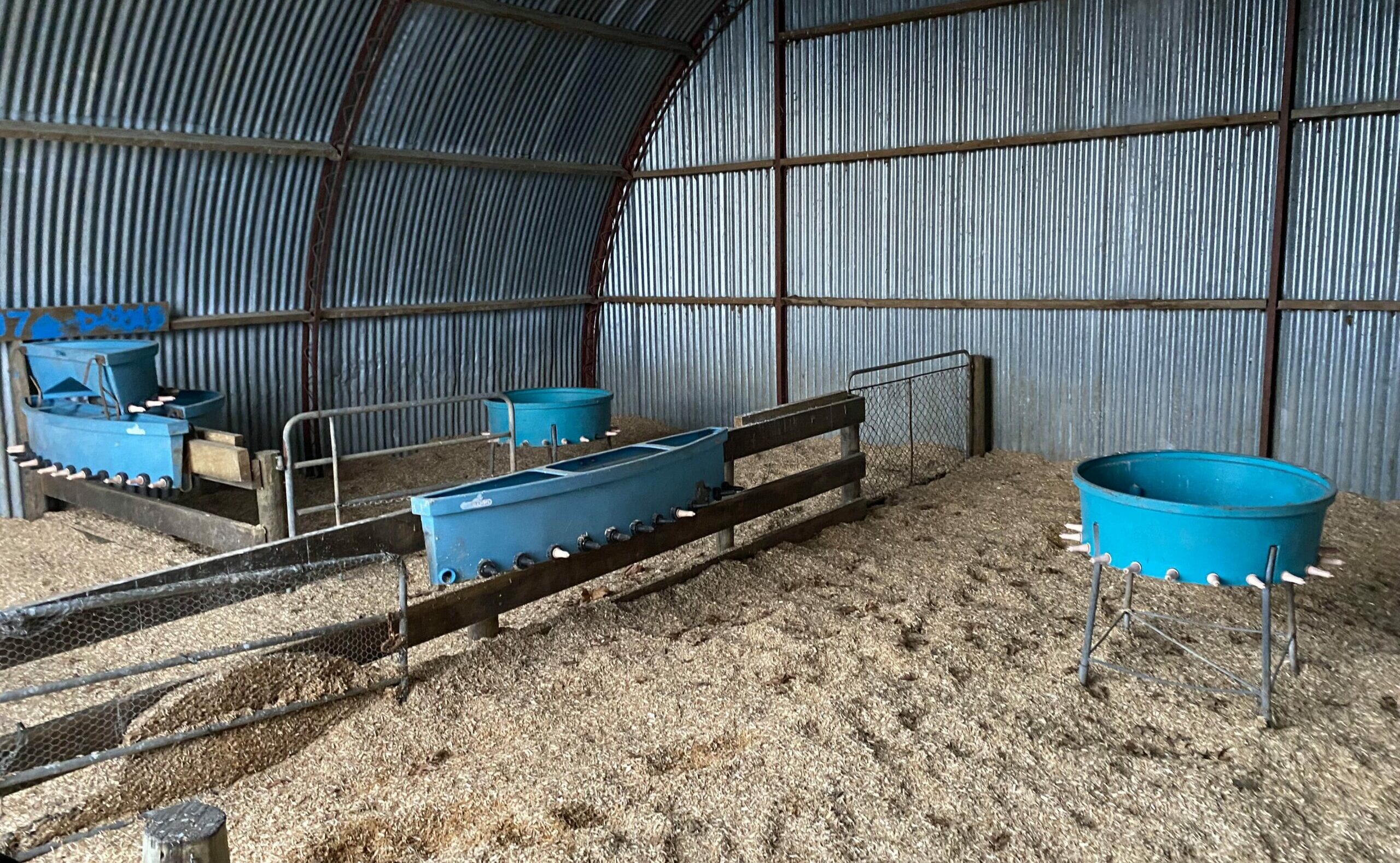
The group then visited the property of Trish and Rob Macintosh, also in Culverden. The cows were wintering on fodder beet crops, which is also common on some farms in southern Chile. 2IC Brett Langford and Uruguayan herd manager Bruno Rigalli were on hand to discuss the operation with the group. The group also visited the run-off that Rob Macintosh manages. There, against a picturesque backdrop, the group discussed heifer and young stock management. The heifers here were grazing on kale and silage.
At Lincoln University Dairy Farm (LUDF), located just outside of Christchurch, the farmer group discussed pasture management strategies and preparing the farm for spring. LUDF is a commercial farm used to demonstrate the sustainable success of dairy and give farmers a clear understanding of a pasture-based system. LUDF information is readily available on their website to anyone around the world. In fact, several of the visitors follow LUDF and so this was a chance to see the farm in real life.
Cuadrado Farm in Ashburton was the last, but definitely not the least, farm visit on the tour. Argentinean, Carlos Cuadrado, first came to experience dairy farming in NZ many years ago. Then, after a few seasons back in Argentina, he and his wife decided to give farm ownership in New Zealand a serious try. So, with a sound business plan, tonnes of enthusiasm, and an amazing work ethic, they returned to New Zealand. Today they have achieved, not only farm ownership, but also continue as sharemilkers on another property. This is proof that with careful planning and dedication, farm ownership can be an achievable goal.
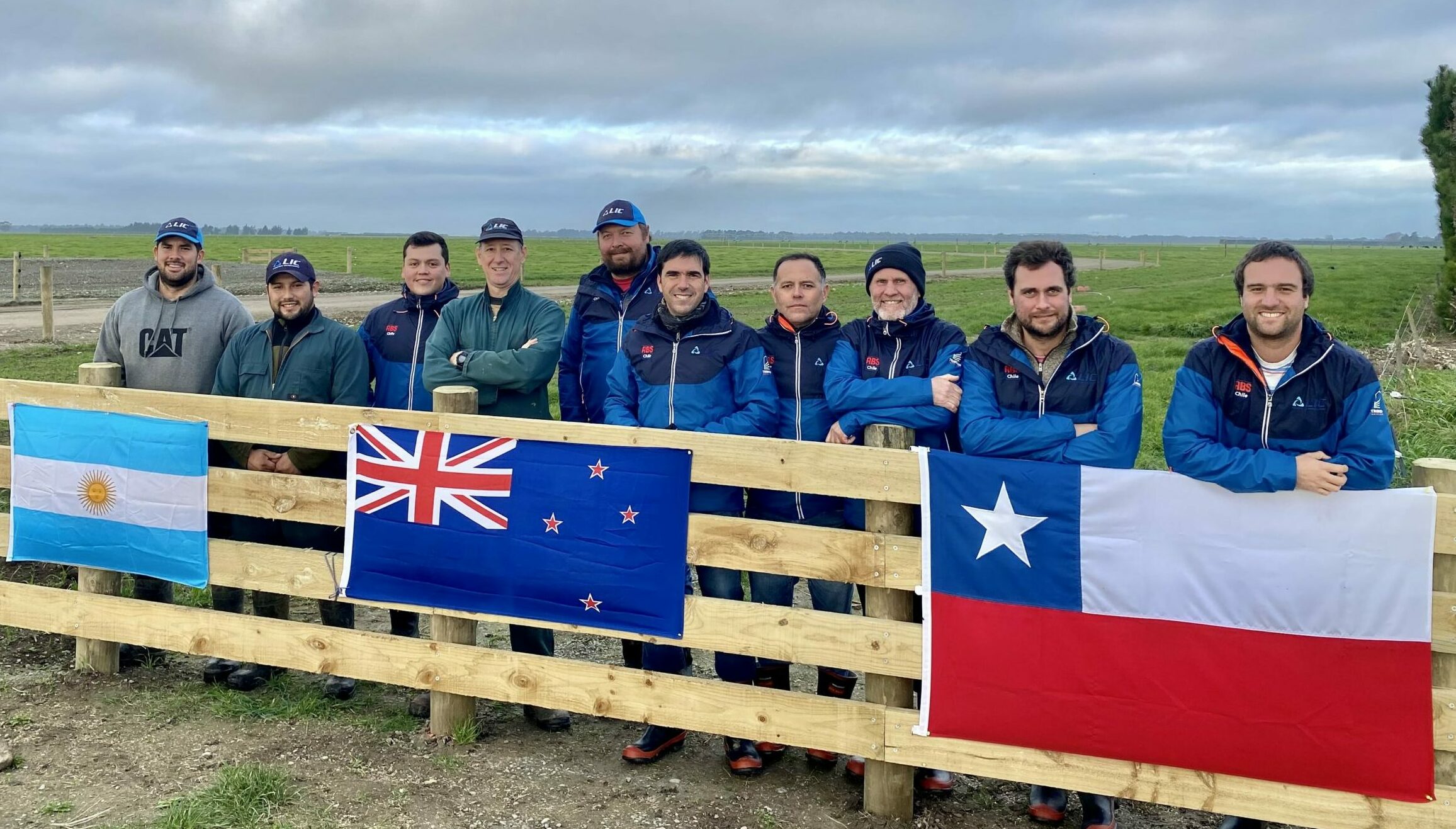
The days were busy on-farm, but there was still time to enjoy some of New Zealand’s famous attractions. The group toured Hamilton’s award-winning gardens that showcase designs from different cultures and periods. They also spent some time in Rotorua, which is renowned for its geothermal activity and Maori culture, and enjoyed the bustling beach town, Mount Maunganui. Although, some would argue that the New Zealand countryside, which the Chilean farmers experienced throughout the farm tour, is the real jewel of New Zealand.
All-in-all, the Chilean farmers returned home with some new perspectives and learnings, maybe even some to apply on their own farms, as well as unforgettable memories and newfound friends.
One of the main takeaways from the tour is the simplicity in which New Zealand farmers run their farm businesses. They work on getting the basics right, planning and keeping their costs down. Of course, no farm is the same, but most NZ farmers understand the key drivers for profit within their system.
